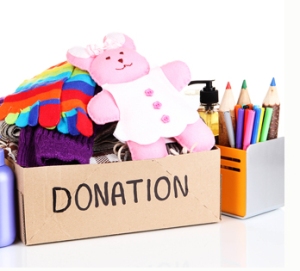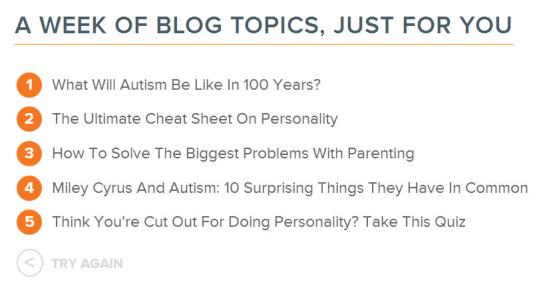 Today’s guest post comes to us from family and non-profit advocates Jennifer L. Jacobson and Gretchen Barry. At a time of year when the message of “getting” comes across loudly and clearly to children, what can parents do to foster a more constructive mind set?
Today’s guest post comes to us from family and non-profit advocates Jennifer L. Jacobson and Gretchen Barry. At a time of year when the message of “getting” comes across loudly and clearly to children, what can parents do to foster a more constructive mind set?
While raising kids has never been easy, it can be one of the most rewarding things that some people do–especially when children grow up to be productive, contributing members to society, and that includes knowing how to give back and enrich the communities in which they live. When should children start participating in the giving process? As early as possible. Even if they’re still toddlers; observing charitable acts that happen regularly and eventually understanding them, will leave a big impression. Learning how to give and developing that skill set is a lifelong journey. Giving is more than a task; it’s a mindset. A way of life, a way of looking at the world and asking, how can I help? How can I make connections between needs and time and resources? How can I bring awareness to specific needs and evoke action?
1. Ask Your Kids How They Would Like to Help.
If giving to a cause is new to your household, involve your kids as early as possible; tell them that your family has the chance to give back. Then, engage them in a conversation about the types of causes they may feel strongly about and ways they think they can help. This could involve helping families, working to save open spaces, caring for nature or a community garden, helping to save an endangered species, or helping those in need. Once you’ve identified key topics that your family is interested in, (make a list, as this helps visualize everything), start researching specific local organizations (add them to the list). Food kitchens Pet shelters and animal rescues Nature conservation efforts Fundraising for various activities for low-income kids, like camp Zoos, museums, and aquariums Schools and local libraries (these days, even they need as much help as they can get) Visitation of patients in hospitals Visitation of the elderly in nursing homes
2. Make a Game Plan.
Get creative about how your family can help the organization(s) you choose. Bake sales are traditional, but there are other ways to help. Talk it through with your family, map it out, and post the results somewhere in the home that is highly visible. Gamify it to some degree with tasks that turn into goals that turn into accomplishment, that result in stickers.
3. Quick Tasks and Ideas That Can Make a Big Difference
• Clear the clutter. Every 6 to 12 months, have a household closet cleaning day (that includes the toy chest, and maybe even the garage). Get everyone in the family to help.
• Make a donate box. Put it out where your kids can add to it. Donate often, even if it’s small.
• Make Detours to Giving. When shopping, make a trip down the canned foods isle. Ask your kids to pick a can of food to put in your donate box at home.
• Find ways to raise money for donations. Hold a yard sale and give all or a portion of it to a selected charity. Do the same with a bake sale, an art sale, etc. Involve our kids at all stages.
• Associate getting with giving. For birthdays and holidays, aside from their other gifts, give your kids a hand-written gift “certificate of giving” with a specified amount of money that they can gift to their favorite charity. Take your child to the charity to donate that money in person if you can. For non-local organizations, write a check, and have your child include a letter.
• Volunteer time in your local community. From public gardens that need weeding, to historic buildings that need painting, or food banks that need help, find something age-appropriate that can engage your family.
4. Growing the Mindset
• Tell stories. There are lots of real-life stories about kids or groups of kids who have found creative ways to give back. Encourage empathy. Share appropriate stories of struggle. Ask kids; what would you do in this situation? How would you want people to help you?
• Walk them through the cycle. If your kids are very young, say, “We’re going to give this can of food/winter coat/gift to ______. (Then explain the results.) “It will give them something to eat/keep them warm this winter/help them __________.”
• Explain why you are doing it and what you’re looking for. “We don’t need to store all this stuff, when someone else could really use it.” Or, “I bet there is a kid out there who would really enjoy playing with that toy. I know you used to love it but how about if you pass it along to someone else, so they can enjoy it as much as you have?” Keep the focus on the people in need and your child’s ability to share an experience through an item. Establishing an impermanent relationship to “things” can help kids better understand the important of relationships over acquiring goods.
• Develop a language of giving in your household. Find creative opportunities to incorporate it into regular conversation. Nothing is permanent, everything is in the process of change. We are stewards of the planet and the things we think we own, and we have the responsibility to help those in need when we have abundance. If ever there is a time when we are without, we hope that others will think of us and help us. Teaching children about the struggles of others not only develops a lifelong giving mindset, it also helps children understand how their words and actions impact those around them—a lesson that bears repeating.
__________________________________
See also:
Certain Parenting Tactics Could Lead to Materialistic Attitudes in Adulthood
COLUMBIA, MO; December 16, 2014—With the holiday season in full swing, many parents may be tempted to give children all the toys and gadgets they ask for or use the expectation of gifts to manage children’s behavior. Now, a new study from the University of Missouri and the University of Illinois at Chicago suggests that parents who overuse material goods as part of their parenting strategy may be setting children up for difficulties later in adulthood.
(Full story . . . )








